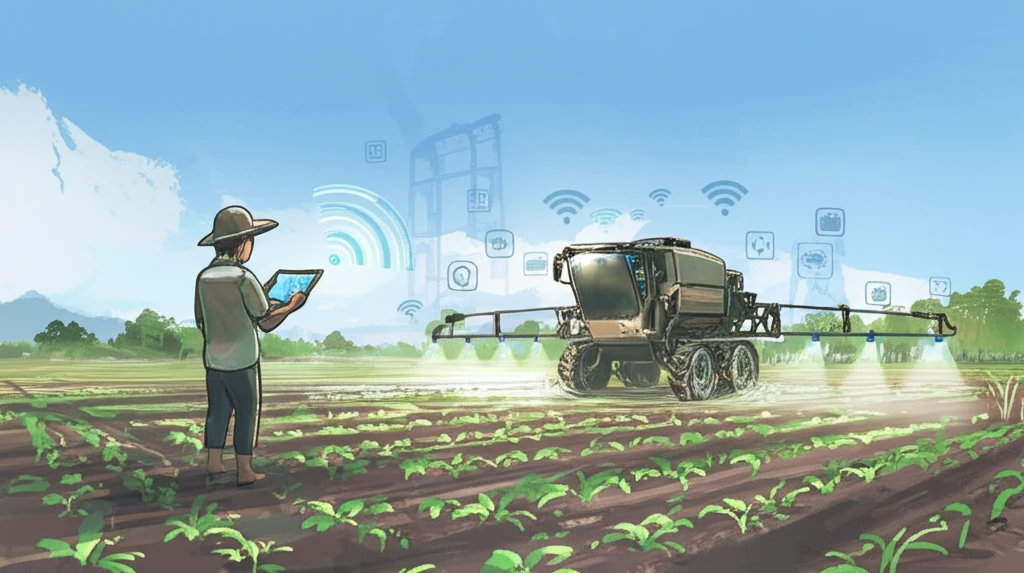
Revolutionizing Agriculture: How Wireless Spraying Machines are Shaping the Future of Farming
"Discover how remote-controlled spraying technology enhances precision, reduces waste, and promotes sustainable practices in modern agriculture."
In the realm of modern agriculture, technology plays a pivotal role in enhancing productivity, sustainability, and safety. Among the latest advancements, wireless remote-controlled (RC) spraying machines stand out as a game-changing innovation, offering a new approach to pesticide and nutrient application. These machines are designed to overcome the limitations of traditional spraying methods, particularly in challenging environments such as hilly areas, greenhouses, and orchards.
Traditional spraying equipment, often manual or semi-automatic, poses significant challenges, including pesticide waste, environmental pollution, and health risks for operators. The overuse and imprecise application of pesticides lead to high residue levels in agricultural products, impacting both human and livestock health. Moreover, manual spraying can be labor-intensive and expose workers to harmful chemicals, making it imperative to seek safer and more efficient alternatives.
Wireless RC spraying machines address these critical issues by providing precise, proportional, and multi-angle spraying capabilities. These machines minimize liquid waste and eliminate direct operator-liquid contact, ensuring safer and more sustainable agricultural practices. By leveraging embedded controller technology and wireless communication, these machines are set to revolutionize how we approach crop protection and nutrient management.
The Core Technologies Behind Wireless Spraying Machines

The development of wireless RC spraying machines involves integrating several key technologies to achieve precise and efficient operation. These components work together to ensure accurate pesticide and nutrient application while minimizing waste and environmental impact. Let's explore the core technologies that power these innovative machines:
- Rotary Pesticide Selection Unit: This unit selects the appropriate pesticides and nutrient solutions based on the specific needs of the crops. It uses a series of dosing conduits and laser photoelectric sensors to accurately identify and position the required solutions. The unit is controlled by an embedded system that ensures precise selection and avoids errors.
- Real-Time Mixing Unit: This unit accurately mixes the selected pesticides and nutrient solutions in real-time. Equipped with a mixing tank, temporary storage tank, and precision pumps, it ensures the correct proportions are maintained. Ultrasonic liquid level sensors and liquid level switches monitor the volumes, while a heater and agitator guarantee thorough mixing.
- Multi-Angle Spraying Unit: This unit provides flexible spraying capabilities, allowing operators to adjust the height, direction, and angle of the spray. Composed of a vaporific nozzle, hose, and multiple motors, it enables precise targeting of crops and ensures even coverage, even in complex environments.
Embracing the Future of Agriculture
Wireless RC spraying machines represent a significant leap forward in agricultural technology, offering a more sustainable, efficient, and safe approach to crop protection and nutrient management. By reducing pesticide waste, minimizing environmental impact, and enhancing operator safety, these machines are paving the way for a more productive and environmentally conscious future of farming. As technology continues to evolve, we can expect even more sophisticated solutions that further transform the agricultural landscape.
